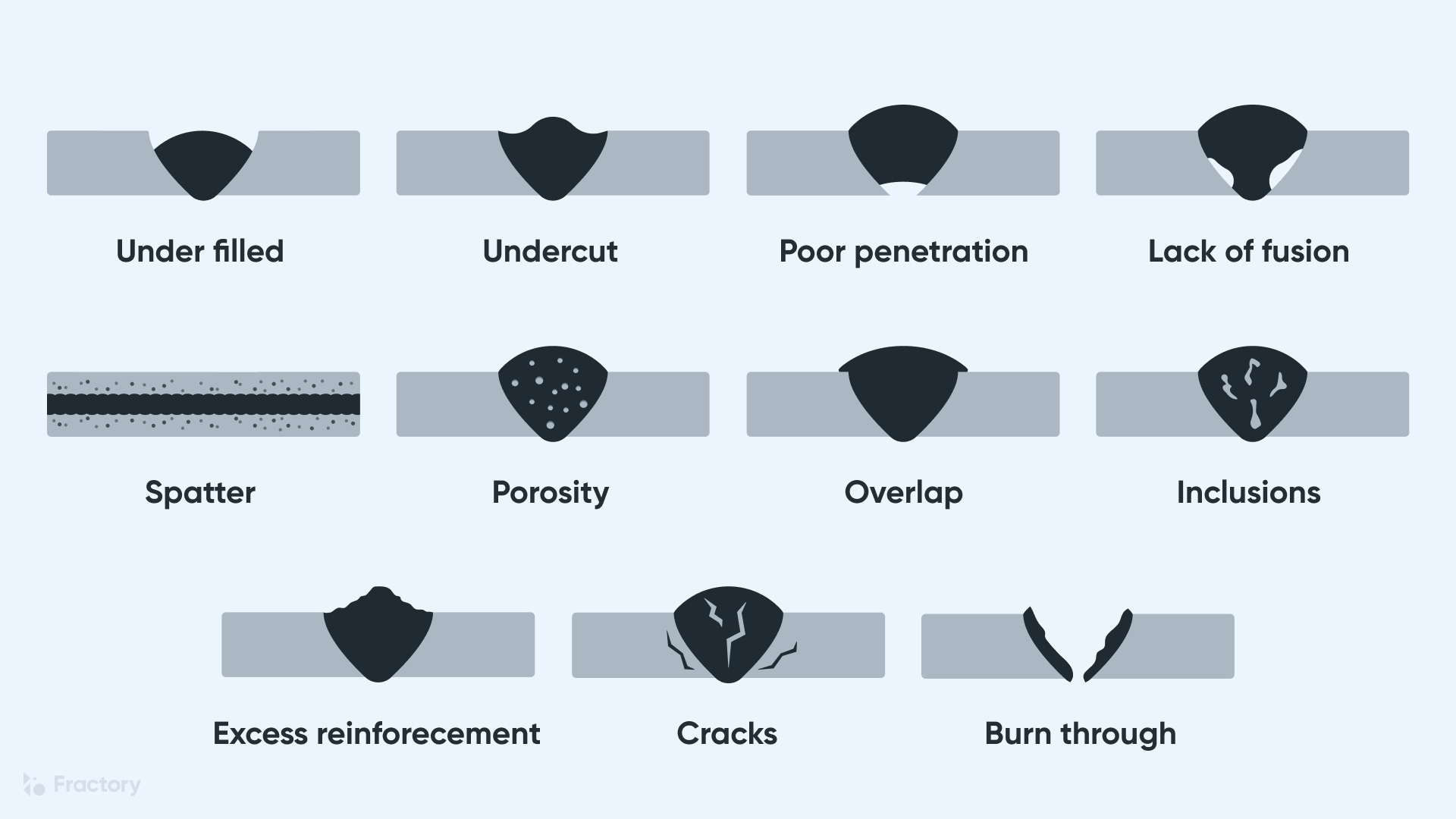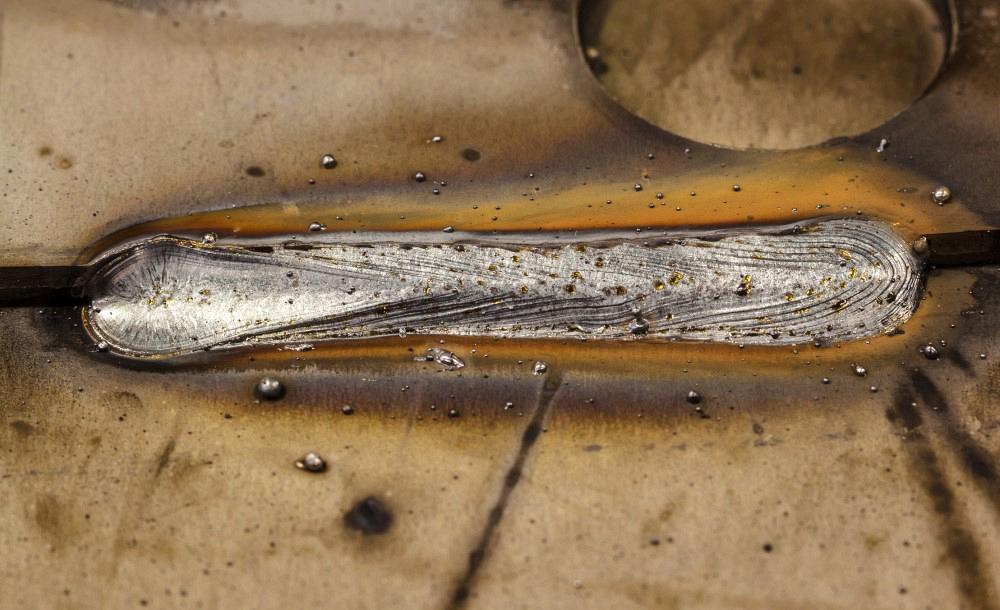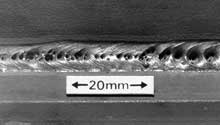Professional Guidance on What is Porosity in Welding and Just How to Address It
Professional Guidance on What is Porosity in Welding and Just How to Address It
Blog Article
Unraveling the Secret of Porosity in Welding: Tips for Minimizing Problems and Taking Full Advantage Of Quality
In the detailed globe of welding, porosity remains a persistent difficulty that can substantially affect the top quality and stability of bonded joints. Comprehending the elements that add to porosity development is vital in the pursuit of perfect welds. By untangling the secret of porosity and applying reliable techniques for flaw reduction, welders can raise the requirements of their work to accomplish superior quality outcomes. As we explore the depths of porosity in welding, revealing the tricks to its prevention and control will certainly be vital for specialists seeking to grasp the art of top notch weldments.
Understanding Porosity in Welding
Porosity in welding, an usual issue experienced by welders, describes the existence of gas pockets or spaces in the bonded material, which can endanger the stability and top quality of the weld. These gas pockets are usually trapped throughout the welding process because of different aspects such as inappropriate protecting gas, contaminated base products, or inaccurate welding parameters. The development of porosity can compromise the weld, making it at risk to fracturing and rust, eventually bring about architectural failures.
Recognizing the source of porosity is crucial for welders to properly prevent its incident. By recognizing the relevance of maintaining appropriate gas protecting, making certain the cleanliness of base products, and enhancing welding setups, welders can significantly reduce the likelihood of porosity development. In addition, making use of strategies like pre-heating the base product, utilizing appropriate welding strategies, and performing extensive assessments post-welding can further assist in lessening porosity flaws. Generally, a comprehensive understanding of porosity in welding is essential for welders to create top notch and resilient welds.

Usual Sources Of Porosity
When examining welding processes for potential high quality concerns, understanding the typical reasons of porosity is important for maintaining weld stability and avoiding architectural failures. Porosity, characterized by the presence of dental caries or voids in the weld metal, can significantly compromise the mechanical residential or commercial properties of a bonded joint.
One more prevalent source of porosity is the visibility of wetness and pollutants externally of the base metal or filler product. When welding materials are not effectively cleaned or are revealed to high degrees of humidity, the vaporization of these contaminants during welding can develop spaces within the weld grain. In addition, welding at improper parameters, such as excessively high traveling speeds or currents, can create excessive disturbance in the weld pool, trapping gases and triggering porosity. By addressing these common reasons with appropriate gas shielding, product prep work, and adherence to optimal welding criteria, welders can lessen porosity and improve the high quality of their welds.
Strategies for Porosity Prevention
Carrying out efficient safety nets is crucial in decreasing the incident of porosity in welding procedures. One strategy for porosity prevention is making certain correct cleansing of the base steel before welding. Contaminants such as oil, oil, rust, and paint can cause porosity, so thorough cleaning using proper solvents or mechanical techniques is vital.

One more trick safety net is the option of the ideal welding consumables. Utilizing high-grade filler products and securing gases that appropriate for the base steel and welding procedure can dramatically minimize the threat of porosity. Additionally, preserving proper welding criteria, here such as voltage, present, travel speed, and gas circulation price, is crucial for porosity avoidance. Departing from the advised settings can result in incorrect gas coverage and inadequate blend, resulting in porosity.
Furthermore, employing appropriate welding methods, such as preserving a constant traveling speed, electrode angle, and arc length, can assist avoid porosity (What is Porosity). Ample training of welders to guarantee they follow finest techniques and high quality control procedures is also crucial in minimizing porosity problems in welding

Ideal Practices for Quality Welds
Ensuring adherence to industry criteria and appropriate weld joint prep work are essential elements of accomplishing constantly premium welds. Along with these fundamental steps, there are a number of best techniques that welders can implement next page to better improve the quality of their welds. One key method is maintaining appropriate tidiness in the welding location. Pollutants such as oil, grease, corrosion, and paint can adversely impact the top quality of the weld, resulting in issues. Completely cleansing the workpiece and surrounding location before welding can aid reduce these problems.
One more ideal practice is to meticulously select the ideal welding criteria for the particular materials being joined. Correct specification choice makes certain ideal weld penetration, fusion, and overall top quality. Making use of high-quality welding consumables, such as electrodes and filler steels, can significantly influence the final weld high quality.
Significance of Porosity Control
Porosity control plays a crucial function in making sure the integrity and top quality of welding joints. Porosity, characterized by the visibility of tooth cavities or gaps within the weld metal, can substantially compromise the mechanical properties and architectural stability of the weld. Excessive porosity deteriorates the weld, making it a lot more at risk to cracking, corrosion, and overall failing under operational tons.
Efficient porosity control is vital for keeping the wanted mechanical buildings, such as strength, ductility, and strength, of the bonded joint. What is Porosity. By decreasing porosity, welders can improve the total high quality and dependability of the weld, making certain that it fulfills the performance demands of the desired application
In addition, porosity control is important for attaining the preferred aesthetic look of the weld. Excessive porosity not just weakens the weld yet additionally takes away from its visual appeal, which can be vital in markets where looks are important. Proper porosity control methods, linked here such as using the proper shielding gas, managing the welding specifications, and making sure correct cleanliness of the base products, are necessary for creating high-grade welds with minimal problems.

Final Thought
To conclude, porosity in welding is a common problem that can endanger the quality of the weld. By comprehending the root causes of porosity and implementing proper avoidance methods, welders can decrease flaws and attain better welds. It is important to regulate porosity in welding to guarantee the stability and stamina of the last item. Carrying out ideal techniques for porosity control is important for attaining ideal welding results.
Report this page